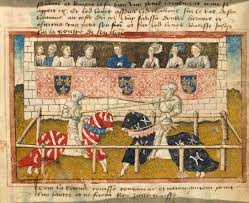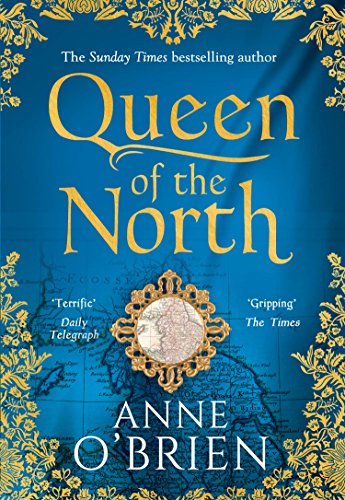Christmas Celebrations in 1399: A Sharp Lesson in Keeping your Friends Close. Your Enemies Closer. And your Family Closer still. By Anne O’Brien #Christmas #History @anne_obrien
 Christmas Celebrations in 1399
Christmas Celebrations in 1399A Sharp Lesson in Keeping your Friends CloseYour Enemies CloserAnd your Family Closer stillBy Anne O’Brien
The celebrations over Christmas and the New Year in 1399, including the Epiphany on 6th January 1400, were the first to be held by King Henry IV after his usurpation of the throne. He was still a widower after the death of Mary de Bohun, but Henry had his young family to entertain. Four sons and two daughters; Henry, Thomas, John and Humphrey; Blanche and Philippa. Prince Henry was the oldest son and oldest child at 12 years. They would expect some Christmas jollity.
It was in fact a relatively quiet Christmas, held at Windsor, where Henry was apparently recovering from food-poisoning.
 Windsor Castle
Windsor CastleBut there would be masques and jousting, feasting and music, Henry being famous for keeping his own troop of minstrels and mummers, as his father John of Gaunt had done before him.

Furthermore Henry was planning a great tournament on the day of the Epiphany, 6th January, at Windsor, to which the lords of the realm were invited, to celebrate the new reign. For the royal youngsters it would be a time of great excitement.

What Henry did to know was that on 17th December, in the Abbot's lodgings at Westminster, a secret meeting had been held by some of these prominent lords who were invited to the Epiphany merriment, to hatch a plot. To assassinate Henry and his four sons on the occasion of the tournament and to restore King Richard II, who was at this time imprisoned in Pontefract castle, to the throne.
What Henry could never have guessed, even if he had heard rumours of the conspiracy, was that the prime plotters were members of his own family, cousins or second cousins or connected by marriage, and some of the most powerful magnates at his court.
- Edward, Duke of Aumale, heir to the Duke of York and so Henry's cousin.- John Holland, Duke of Exeter, married to Henry's sister Elizabeth.- Thomas Holland, Duke of Surrey, John Holland's nephew.Both of the Hollands were related to Henry through the marriage of their mother Joan of Kent to Edward, the Black Prince.- Thomas, Earl Despenser, husband of Constance of York who was Edward of Aumale's sister.
Because of their previous loyalty to King Richard, these magnates had all been demoted from Duke to Earl, or Earl to Lord in the case of Despenser, in the first months of Henry's reign. For this reason they had a particularly sharp axe to grind.
Included in the conspiracy was young clerk, Richard Maudeleyn, who, dressed in suitable armour with a closed helm and on horseback, would pretend to be King Richard until the real king could be released from his imprisonment and brought to London. The plotters intended to stir the Londoners into supporting their previous king.
Imagine this: this group of royal cousins all celebrating Christmas and New Year with Henry at Windsor. Now there's a macabre thought, Henry still malingering from whatever had attacked his guts, while his close relatives sang and danced with the youngsters and contemplated their bloody massacre.
Henry's reign would all have been over by the Epiphany and Richard restored, except for the fact that Henry was warned on the 4th January, two days before the event. Who betrayed the conspiracy to him? The finger points very firmly at Edward of Aumale since he was the only one of the plotters not to pay the penalty for treason, and in fact helped Henry put down the risings. This scenario seems more likely than the rumour of a London prostitute who, picking up on the detail of the plot from a talkative customer, and passed the message on.
The end result was predictable. Henry, recovered from his ailment, lost no time in riding hard and fast for London, by a round-about route so that he would not be intercepted. Once there he lodged his children in the Tower for safety and then began to collect troops, paying out substantial sums for those who would take up arms in his name. London was quick to rise to Henry's support.
The rebels, hearing that they were discovered, fled, but were apprehended. Despenser was executed in Bristol when trying to find a ship to take him to France. Exeter, his escape-ship driven aground in a storm, was beheaded at Pleshey Castle, his head sent to be displayed on London Bridge. The Holland Earl of Surrey was executed in Cirencester with other plotters, his head sent to Henry in a basket.
A gruesome end to the plotters, but they would have assassinated Henry and his children without a qualm. In the days that followed, Henry sat in judgement on the rest of the rebels who were rounded up and also executed, including the hapless Maudeleyn. Twenty six were to meet their death but Henry pardoned many more, seeing the need sometimes to be magnanimous to win support for the young reign.
By February King Richard II too had died, it was said from self-inflicted starvation. A likely story.
So when you are enjoying your Christmas Celebrations, amidst the company of your friends and family, when you have had quite enough of them and would really like them to go home, remember the treacherous events that almost wiped out the family of King Henry IV in 1399 and count your blessings.
The Queen of the North

To those around her she was a loyal subject.In her heart she was a traitor.
1399: England’s crown is under threat. King Richard II holds onto his power by an ever-weakening thread, with exiled Henry of Lancaster back to reclaim his place on the throne.
For Elizabeth Mortimer, there is only one rightful King – her eight-year-old nephew, Edmund. Only he can guarantee her fortunes, and protect her family’s rule over the precious Northern lands bordering Scotland.But many, including Elizabeth’s husband, do not want another child-King. Elizabeth must hide her true ambitions in Court, and go against her husband’s wishes to help build a rebel army.
To question her loyalty to the King places Elizabeth in the shadow of the axe.
To concede would curdle her Plantagenet blood.
This is one woman’s quest to turn history on its head.
Amazon
Anne O’Brien
 Anne O’Brien was born in West Yorkshire. After gaining a BA Honours degree in History at Manchester University and a Master’s in Education at Hull, she lived in East Yorkshire for many years as a teacher of history.
Anne O’Brien was born in West Yorkshire. After gaining a BA Honours degree in History at Manchester University and a Master’s in Education at Hull, she lived in East Yorkshire for many years as a teacher of history.She now lives with her husband in an eighteenth-century timber-framed cottage in the depths of the Welsh Marches in Herefordshire, on the borders between England and Wales, where she writes historical novels. The perfect place in which to bring medieval women back to life.
Anne loves to hear from readers, you can find her: Website • Facebook • Twitter
Published on December 12, 2018 23:00
No comments have been added yet.
The Coffee Pot Book Club
The Coffee Pot Book Club (formally Myths, Legends, Books, and Coffee Pots) was founded in 2015. Our goal was to create a platform that would help Historical Fiction, Historical Romance and Historical
The Coffee Pot Book Club (formally Myths, Legends, Books, and Coffee Pots) was founded in 2015. Our goal was to create a platform that would help Historical Fiction, Historical Romance and Historical Fantasy authors promote their books and find that sometimes elusive audience. The Coffee Pot Book Club soon became the place for readers to meet new authors (both traditionally published and independently) and discover their fabulous books.
...more
...more
- Mary Anne Yarde's profile
- 159 followers



